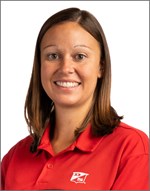Product and Agronomy Research (PAR) Results: Third in a Series of Three
BY Dairyland Seed Agronomy Team
This week’s newsletter features Part 3 in our 3-Part series of reports from our 2021 Product and Agronomy Research (PAR) trials. This week’s newsletter features Part 3 in our 3-Part series of reports from our 2021 Product and Agronomy Research (PAR) trials. This week we are sharing the results from the study titled "Foliar Disease Control in Silage Corn for Increased Tonnage".
FOLIAR DISEASE CONTROL IN SILAGE CORN FOR INCREASED TONNAGE
Description:
Concern over corn foliar diseases has increased in recent growing seasons. Specifically, we wanted to focus on corn silage and the impact fungicides may have on the quantity and quality of silage produced. To accomplish this, three types of corn silage hybrids (HiDF-4999Q™, BMR-3508RA™ and DS-5279Q™) were treated with Approach Prima. They were planted at 33,600 and managed at standard agronomic levels. We utilized four replications, hand harvesting silage, machine harvesting grain as well as noted visual leaf disease ratings.
Results:

Conclusion:
As we reviewed the data some interesting trends surfaced. First, all three diseases rated (gray leaf spot, northern corn leaf blight and tar spot) were at fairly low infestation levels. The one exception was on the BMR product. In most cases across the Dairyland Seed footprint tar spot infestations increased precipitously in the month following our ratings (Aug. 25). Even with relatively low disease levels we did record a reduction in observed disease infections. Fungicide seemed to increase all areas of major interest in silage production. Yield was improved by approximately 1,400 lbs. an acre and increased starch by 1.2 and NDFD30 by 1.4. The increase in tons roughly covered the cost of fungicide with a few dollars extra. Keep in mind our check ratings for disease were low. The extra value from a fungicide application in this year’s environment really comes from the increase in silage quality. Another factor to consider is increased “feed hygiene” limiting the amount of any disease lesions on the leaf tissue.
 |
 |
 |
 |
 |
| Brian Weller Western Region 507.456.3034 |
Dan Ritter Central Region 219.863.0583 |
Branden Furseth Northern Region 608.513.4265 |
Mark Gibson Eastern Region 260.330.8968 |
Amanda Goffnett Eastern Region 989.400.3793 |
